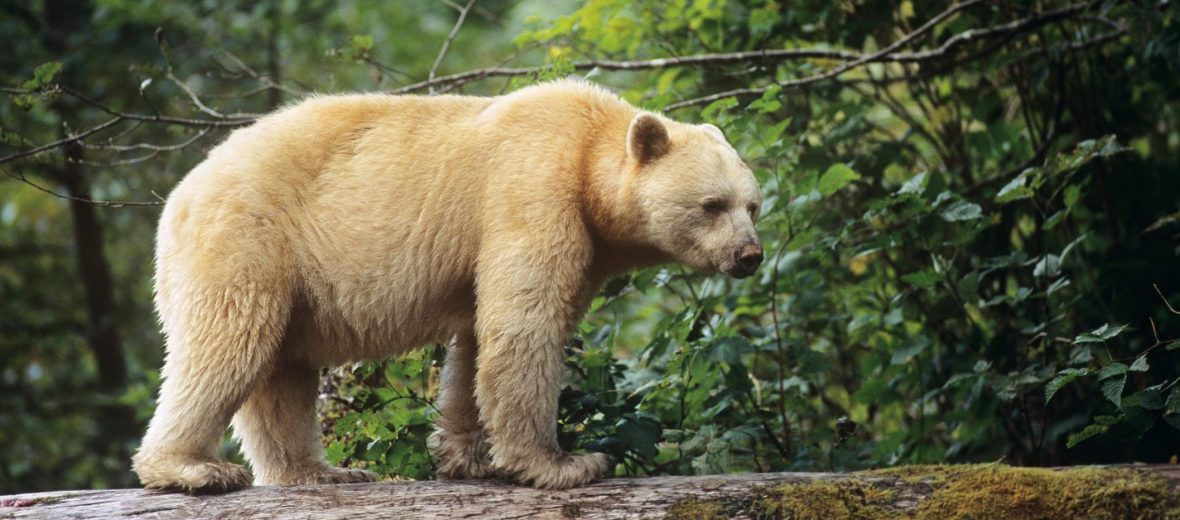
The kermode bear (pronounced ker-mode-ee), aka spirit bear or ghost bear, is a subspecies of the North American black bear that possesses a rare recessive gene that causes their fur to grow cream or white. They are not albino, as they have a pigment in their skin and eyes that differentiates them from albinos. For example, they lack pink eyes and have a darker skin color under their pale fur. These oddities are found on the islands of Gribbell, Princess Royal, and Roderick, in British Columbia. Kermode bears are not currently evaluated by the IUCN.
First the Stats…
Scientific name: Ursus americanus kermodei
Weight: Up to 805 lbs.
Length: Up to 6.6 feet
Height: Up to 3 feet
Lifespan: Up to 25+ years
Now on to the Facts!
1.) These bears feast on berries, bulbs, forbs, fruits, grasses, nuts, insects, mice, rats, voles, moles, gophers, deer fawns, moose calves, salmon, and carrion (dead animals).
2.) These bears are the official provincial mammal of British Columbia and the symbol of Terrace, British Columbia.
3.) They were named after Frank Kermode, former director of the Royal B.C. Museum, who researched the subspecies and was also a colleague of William Hornaday, the zoologist who described them.
4.) In what is known as positive assortative mating, black kermode bears tend to breed only with black kermode bears and the white/cream bears breed only with other white/cream bears.
5.) White bears are 35% more successful than black bears in capturing salmon, during the day. This is due to the fact that salmon tend to steer clear of large, black models about 2 times as frequently as they avoid large white ones.
But wait, there’s more on the kermode bear!
6.) Viewing these bears as sacred, the First Nations communities call these bears “moskgm’ol,” which simply translates to “white bear.”
7.) Due to the bear’s cultural significance, efforts have been put in place to conserve these amazing beasts.
Did you know…?
Even though most kermode bears are black, there are an estimated 100 – 500 fully white/cream individuals in existence.
8.) The main threats to these bears are pollution from oil pipelines and habitat destruction.
9.) Due to the fact that salmon are down river, grizzly bears travel farther to look for food and are encroaching on spirit bear territories. Grizzlies are larger and more aggressive than kermode bears and often chase them out of the area, so they end up going without their preferred food source.
10.) Females birth up to 5 cubs, during hibernation.
Now a Short Kermode Bear Video!
Be sure to share & comment below! Also, check out the Critter Science YouTube channel. Videos added regularly!
Want to suggest a critter for me to write about? Let me know here.



